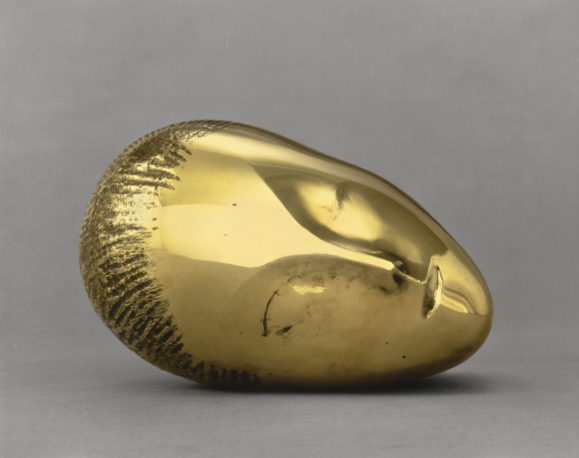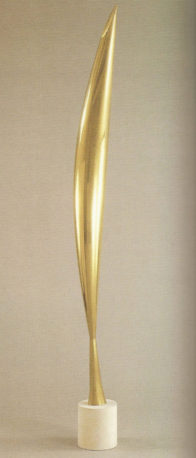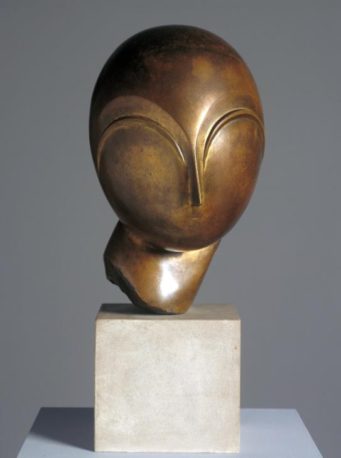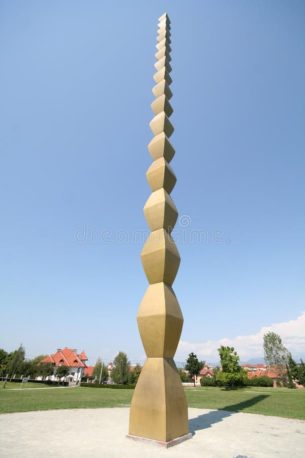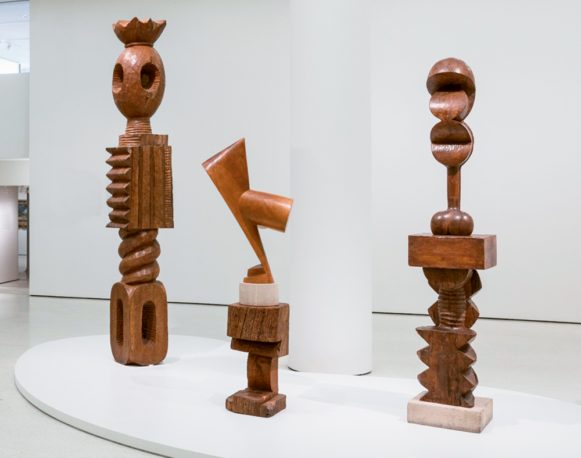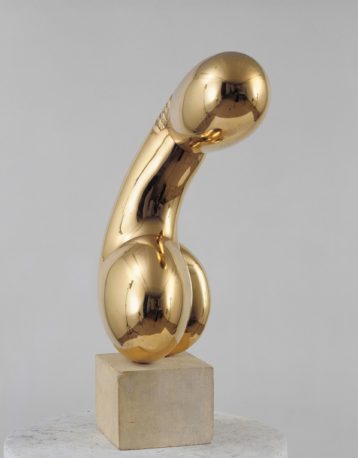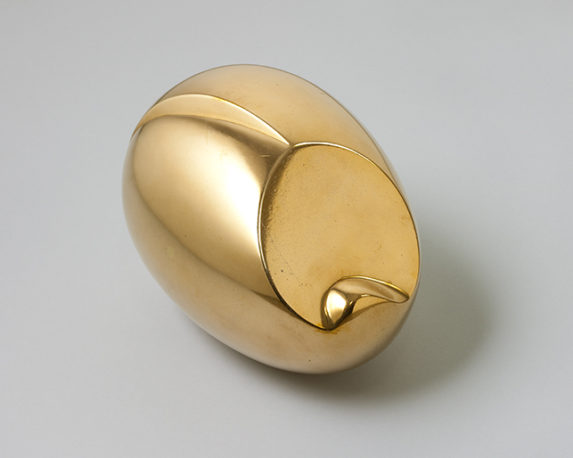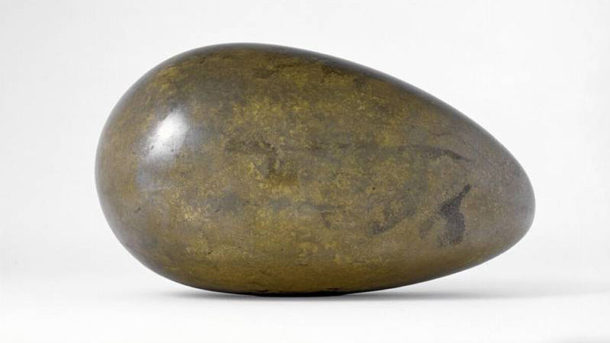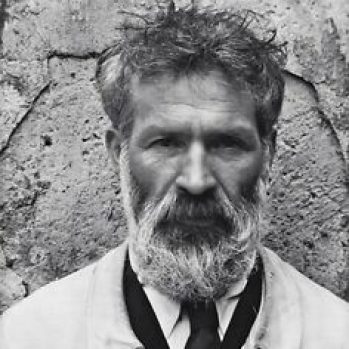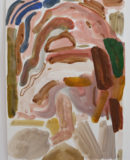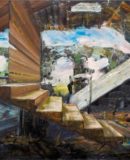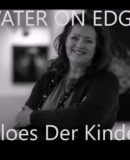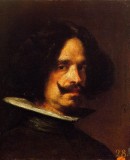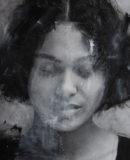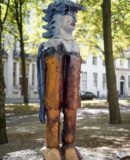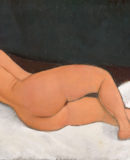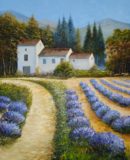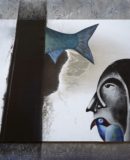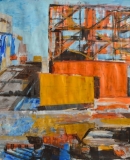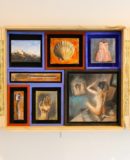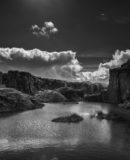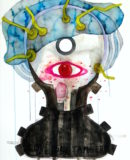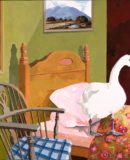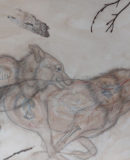World Fine Art Professionals and their Key-Pieces, 298 - Constantin Brancusi
World Fine Art Professionals and their Key-Pieces, 298 – Constantin Brancusi
Brancusi’s sculptures are simple, stripped of superfluous elements. You recognize them immediately. In his pursuit of perfection, Brancusi refined forms to the essence. The material was the starting point, often the shape was already in the material and it was a matter of cutting away until the image was there. His knowledge of Romanian folk art served the sculptor well.
Born in 1876, Brancusi grew up in the village of Hobita, near Targu Jiu, close to the Carpathian Mountains in Romania, an area known for its rich tradition of folk art, especially wood carving. The region’s geometric patterns can be seen in his later works.
Shepherd
His parents Nicolae and Maria Brancuși were poor farmers who earned a meager income. From the age of seven, Constantin tended the family’s flock of sheep. While traveling around he worked pieces of wood with his knife. Constantin often ran away from home because he was bullied by his father and his older brothers.
At the age of nine, Brancusi left his village of Hobita to work in the nearest major city. In Slatina he worked as a grocer’s assistant and in Craiova as a handyman in a café. He made a violin from material that lay together in one corner. A café-goer, an industrialist, was so impressed that he enrolled him at Craiova’s arts and crafts school. He turned out to have real talent and in 1898 he graduated cum laude with his woodcarving.
Bucharest
Subsequently, he enrolled at the Bucharest School of Fine Arts, where he received an academic training in sculpture. He worked hard and quickly distinguished himself. One of his earliest surviving works, under the direction of his anatomy teacher, Dimitri Gerota, is a masterfully rendered écorché (statue of a man whose skin has been removed to reveal the muscles underneath) exhibited at the Romanian Athenaeum in 1903. Although an anatomical study, it foreshadowed the sculptor’s later attempts to reveal essence rather than just copy appearance.
Paris
In 1903 Brancusi traveled to Munich and from there to Paris. His name had already preceded him. He was welcomed by the artist community. He worked for two years in the studio of Antonin Mercié of the École des Beaux-Arts, and was invited to work in the studio of Auguste Rodin. Although he admired the eminent Rodin, he left the atelier after just two months, commenting “Nothing can grow under big trees”.
After leaving Rodin’s workshop, Brancusi began to develop his revolutionary style. His first commissioned work, The Prayer, was part of a gravestone. It shows a young woman making a cross while kneeling. It is the first step towards an abstracted, non-literal representation, showing his urge to portray ‘not the outer form but the idea, the essence of things’. He also started to do more woodcarving, around 1908 he was almost exclusively doing that.
In the years that followed he made many versions of ‘The Sleeping Muse’ and ‘The Kiss’, simplifying shapes into geometric and boned objects.
Farm house
Brancusi dressed like the Romanian peasants did. His atelier resembled a farmhouse from his native region with a large rock slab as a table and a primitive fireplace, while he had made the furniture himself from wood. He cooked his own food, traditional Romanian dishes, which he also offered to his guests. As a talented handyman, he built his own gramophone.
He had a broad spectrum of interests, from science to music. He was a good violinist and sang old Romanian folk songs, expressing his feelings of homesickness. After the advent of communism, he never considered returning permanently to his native country, but he did visit it eight times.
Parisian avant-garde
His circle of friends included artists and intellectuals in Paris such as Amedeo Modigliani, Ezra Pound, Henri Pierre Roché, Guillaume Apollinaire, Louise Bourgeois, Pablo Picasso, Man Ray, Marcel Duchamp, Henri Rousseau, Peggy Guggenheim, Tristan Tzara and Fernand Léger. Although surrounded by the Parisian avant-garde, Brancuși never lost touch with Romania and had friends from the community of Romanian artists and intellectuals living in Paris.
His works became popular in France, Romania and the United States. Collectors, notably John Quinn, bought his work and reviewers gave good comments. In 1913, Brancusi’s work was shown at both the Salon des Indépendants and the first US modern art exhibition, the Armory Show.
Bird in Space
One of his most important sculptures in the 1920s was ‘Bird in Space’ – an abstract form of a bird in flight. It was based on his earlier Maiastra series. In Romanian folklore, the Maiastra is a beautiful golden bird that foretells the future and heals the blind. Over the next 20 years, Brancuși made various versions of Bird in Space out of marble or bronze.
One of these versions caused a great deal of controversy in 1926, when photographer Edward Steichen bought a copy and shipped it to the United States. Customs officials did not accept the Birdl as a work of art and rated it as an industrial object. After lengthy legal proceedings, this judgment was overturned, confirming the Bird’s status as a duty-exempt artwork. The statement also established the important principle that ‘art’ does not have to include a realistic representation of nature, and that something abstract can also be art.
Targu Jiu
His work became increasingly popular in the US, where he went several times. In 1938 he completed the World War I memorial in Targu-Jiu, where he had spent much of his childhood. ‘Table of Silence’, ‘The Gate of the Kiss’ and ‘Endless Column’ commemorate the courage and sacrifice of Romanians who defended Targu Jiu in 1916 against the armies of the Central Powers (Germany, Austria-Hungary, Turkey and Bulgaria). The Targu Jiu ensemble marks the peak of his artistic career.
In his later years, Brancusi was cared for by a Romanian refugee couple. He became a French citizen in 1952 to make the caretakers heirs, and to bequeath his studio and its contents to the Musée National d’Art Moderne in Paris.
Brancusi died on March 16, 1957, aged 81. He was buried in the Cimetière du Montparnasse in Paris. This cemetery also contains statues that Brancusi has carved for deceased artists.
https://ifthenisnow.eu/nl/personen/constantin-brancusi
Disclaimer: The views, opinions and positions expressed within this guest article are those of the author Walter van Teeffelen alone and do not represent those of the Marbella Marbella website. The accuracy, completeness and validity of any statements made within this article are not guaranteed. We accept no liability for any errors, omissions or representations. The copyright of this content belongs to Walter van Teeffelen and any liability with regards to infringement of intellectual property rights remains with the author.

